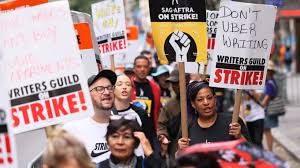
Strikes are a powerful tool for workers to voice their demands, but they often prompt varying responses from governments. Depending on the type of strike, the sector involved, and its economic or political implications, governments may react with negotiations, legal measures, or more coercive tactics. This article explores the typical government responses to strikes, the factors influencing these responses, and the potential impacts on society.
Understanding the Nature of Strikes
Before delving into the government’s response, it’s essential to understand the types of strikes and their causes. Strikes can range from small, localized actions by specific groups of workers to national general strikes involving multiple sectors. Common reasons for strikes include wage disputes, poor working conditions, and opposition to new policies or laws.Types of Strikes
Strikes can be categorized into several types, including wildcat strikes (without union approval), sympathy strikes (to support other workers), and political strikes (to protest government policies). Each type can trigger different levels of government intervention.
Government Approaches to Strikes
Governments typically adopt one or a combination of the following approaches when dealing with strikes:Negotiation and Dialogue
Many governments opt for a diplomatic approach, engaging in negotiations with trade unions and worker representatives to resolve disputes. In this scenario, the government acts as a mediator, sometimes offering concessions or facilitating compromises between workers and employers.Legal and Regulatory Measures
Some governments rely on legal frameworks to manage strikes. For example, many countries have labor laws that outline the legal procedures for striking, including notice periods and essential service agreements. Governments may issue court injunctions to stop illegal strikes or impose penalties on striking workers and unions.Coercive Tactics and Force
In more extreme cases, governments may respond with force or coercive measures, especially if the strike disrupts essential services or threatens public order. This can include deploying police forces, arresting strike leaders, or even enforcing emergency laws to compel workers back to their jobs.
Factors Influencing Government Responses
Several factors influence how a government responds to strikes. These include:Economic Impact
Governments may be more inclined to act swiftly and decisively if a strike threatens key industries such as transportation, healthcare, or energy. Prolonged strikes in these sectors can disrupt the economy, prompting governments to prioritize restoring order.Political Pressure
Political factors, including public opinion and pressure from opposition parties, can shape the government’s approach to strikes. In democratic nations, leaders may adopt a more conciliatory stance to avoid alienating voters, whereas more authoritarian regimes may suppress strikes with force.Legal Constraints
The government’s response is also shaped by the legal environment. Some countries have strict laws governing labor disputes, while others allow greater leeway for strikes and protests. For example, some European nations protect the right to strike in their constitutions, limiting the government’s ability to intervene.
The Role of Unions and Worker Organizations
Trade unions and worker organizations play a critical role in strikes and negotiations. Strong unions can often leverage their power to force governments into negotiations. In countries with weaker unions or more fragmented labor movements, governments may feel less pressure to engage with workers’ demands.Union-Government Relations
The relationship between trade unions and the government can significantly influence strike outcomes. In some countries, unions have close ties to political parties, allowing for smoother dialogue. In others, confrontational relations can lead to prolonged disputes.
Government Responses to High-Profile Strikes: Case Studies
To understand how governments react to strikes in practice, let’s examine a few notable case studies:The UK Public Sector Strikes (2023)
Faced with public sector strikes over wage disputes, the UK government engaged in prolonged negotiations with unions but also passed legislation to limit the ability of essential workers to strike. This approach combined both negotiation and legal action to mitigate the impact of the strikes.The Indian Farmers’ Strike (2020-2021)
In response to large-scale protests and strikes by farmers opposing new agricultural laws, the Indian government initially took a hardline approach. However, sustained public pressure eventually led to concessions, with the government repealing the controversial laws after prolonged negotiations.
French Labor Strikes (2019-2020)
During mass protests and strikes against pension reform, the French government initially resisted union demands. However, facing continued disruptions, the government eventually postponed the reform, demonstrating a mixed response of resistance followed by compromise.
Long-Term Impact of Government Responses
The way governments respond to strikes can have long-term implications for labor relations and social stability. Successful negotiations can lead to stronger cooperation between workers and the government, while coercive responses may deepen societal divides and lead to future conflicts.Strengthening Labor Relations
A government that adopts a more conciliatory approach and addresses worker grievances can improve labor relations in the long run, leading to a more stable and productive workforce.Potential for Escalation
Conversely, heavy-handed government responses can escalate tensions, resulting in larger and more frequent strikes or even political unrest. In extreme cases, this can lead to broader social movements challenging the government’s legitimacy.
Government responses to strikes vary widely based on the nature of the strike, the sectors involved, and the broader political and economic context. While negotiation and dialogue are often the preferred approach, legal measures and, in some cases, coercive tactics are also employed. The impact of these responses can shape the future of labor relations, with potential consequences for both workers and governments.Governments must balance maintaining public order and economic stability with respecting workers’ rights to strike. The key to successful resolution often lies in the willingness of all parties—government, workers, and employers—to engage in meaningful dialogue and compromise.
Subscribe to Follow Global Trends for daily global news.
Find Out How To Make Money As A Full Time Writer/Blogger Guide.
To Advertise, Advertise Your Affiliate Links on FollowGlobalTrends.com for Just $1 Per Link Per Month!
Related Articles
Written By: Enyoghasi Ngozi pricillia
,

